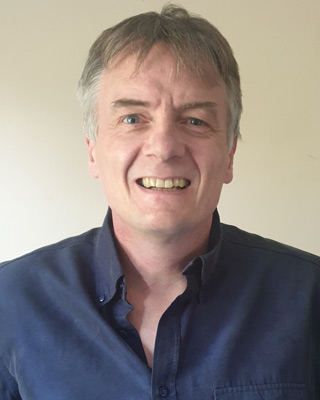John Edwards

Introduction To Kalman Filters
Status: Available NowKalman filters are powerful recursive estimation algorithms widely used in control systems, signal processing, and navigation. They provide an efficient means to estimate the internal state of a dynamic system in the presence of noise and uncertainty, making them indispensable in applications such as target tracking, sensor fusion, robotics, and communications.
This presentation introduces the foundations and practical implementation of Kalman filters in an accessible manner. We begin with the motivation for state estimation, reviewing the limitations of direct measurement in noisy environments. The mathematical framework of the Kalman filter is then presented, highlighting the state-space model, prediction and update steps, and the role of covariance in quantifying uncertainty. Emphasis is placed on the recursive nature of the algorithm, which enables real-time operation with minimal computational complexity.
Practical examples illustrate how the filter balances model predictions with noisy observations to achieve optimal estimates. By the end of the presentation, attendees will understand both the theoretical foundations and practical benefits of Kalman filtering, equipping them to apply the method to a wide range of engineering and signal processing problems. This presentation will include example code and walk throughs.
Introduction To Fractional Delay Farrow Filters
Status: Available NowFractional delay (FD) filters are fundamental in digital signal processing when signals must be delayed by a non-integer number of samples with high accuracy and low distortion. Applications include sample rate conversion, beamforming, synchronization, and channel modeling. Among the various FD filter design methods, the Farrow structure has emerged as a particularly efficient and flexible approach. This presentation introduces the principles, implementation, and advantages of fractional delay Farrow filters.
We begin by reviewing the concept of FD filtering and the challenges associated with achieving arbitrary delays in discrete-time systems. Next, the Farrow filter structure is examined in detail, highlighting its polynomial-based decomposition and modular architecture that enables real-time tunability of the delay without redesigning the filter. The computational benefits of the Farrow approach, including its suitability for hardware implementation and low memory footprint, are discussed.
Simulation examples demonstrate the performance of different polynomial approximations in terms of delay accuracy, group delay distortion, and numerical stability. Finally, we outline practical applications where fractional delay Farrow filters offer significant performance gains. Attendees will gain a clear understanding of both the theoretical foundations and practical aspects of these filters, equipping them to apply Farrow structures effectively in DSP systems.
Building A Tensorflow Lite Neural Network Vibration Classifier, With A Little Help From DSP
Status: Available NowThis presentation will walk through a Python Notebook that uses a combination of DSP and a Convolutional Neural Network (CNN) to classify multiple vibration modes of a rotating machine.
The key to developing an efficient vibration mode classifier is the use of DSP algorithms to optimize the task.
The DSP functions will pre-process the data to allow a simpler Neural Network to be used for the classification.
The CNN will use a Tensorflow model that is trained on the supplied data, it will then use the model to classify new data.
We will also include the code to generate and test both the Tensorflow and Tensorflow Lite models.
Once generated, we will test the Tensorflow Lite model to ensure it classifies the data as well as the floating point model.
Live Q&A - Building A Tensorflow Lite Neural Network Vibration Classifier, With A Little Help From DSP
Status: Available NowLive Q&A with John Edwards for the talk titled Building A Tensorflow Lite Neural Network Vibration Classifier, With A Little Help From DSP
An Introduction To High Efficiency And Multi-rate Digital Filters
Status: Available NowThere are many ways to implement digital filters and many architectures that can be chosen to achieve the optimum performance, which is typically measured in terms of MIPS and memory. This presentation will describe several optimized filtering techniques and architectures and show how they are used.
Examples will include Comb, Polyphase, Cascaded Integrator Comb (CIC) and more.
Live Q&A with John Edwards - An Introduction To High Efficiency And Multi-rate Digital Filters
Status: Available NowLive Q&A with John Edwards following his talk titled "An Introduction To High Efficiency And Multi-rate Digital Filters"
Frequency Domain Signal Processing (2020)
Status: Available NowFrequency domain signal processing is not just about using the Fast Fourier Transform for calculating a power spectrum, it is also a very efficient method of processing signals compared to traditional time domain techniques. This presentation will describe several common frequency domain algorithms and show how they are used. Examples will include Frequency Domain Filtering, Time Delay Estimation and Interpolation; and more.
Live Q&A Discussion - Frequency Domain Signal Processing (2020)
Status: Available NowThis is a the live Q&A session for the talk given by John Edwards and titled 'Frequency Domain Signal Processing'

